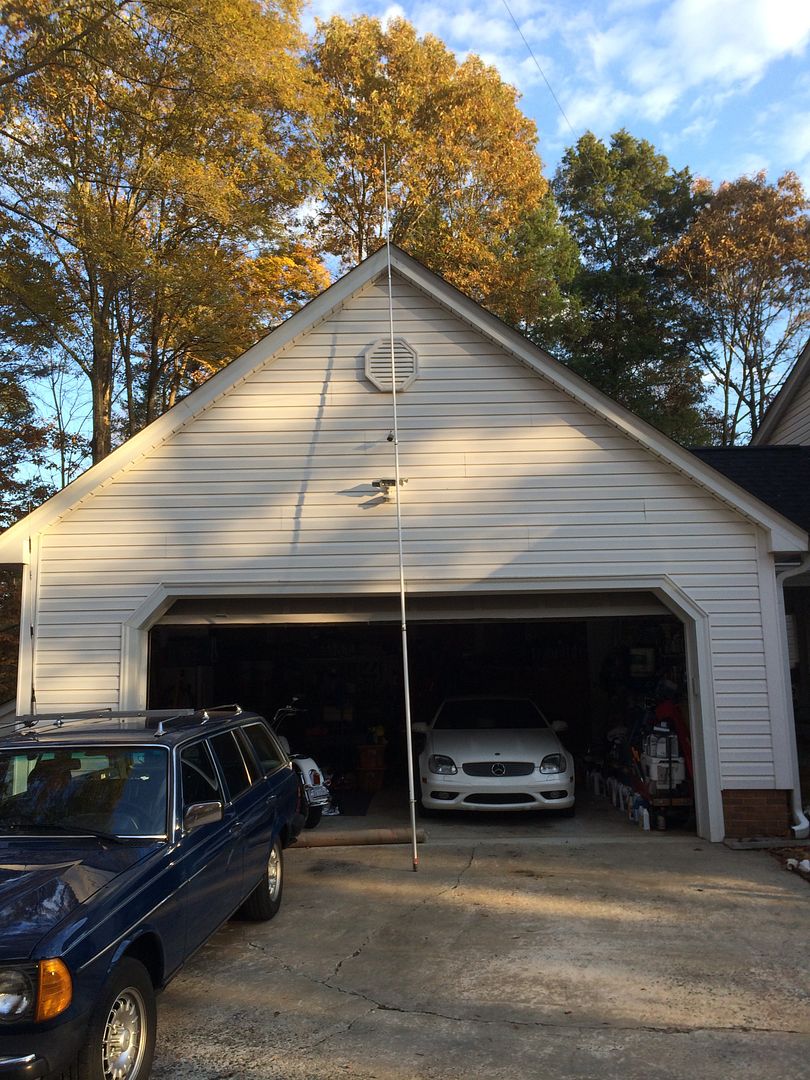Diamond X300 Antenna Manual

Diamond X-30 X-50 X-200 X-300 User manual Author: IW1AU, op. Subject: Antenna VHF UHF Keywords: Diamond, X-30, X-50, X-200, X-300, User manual.

The most important part of my home amateur radio station is finally in place! Here is my Diamond X300 antenna, installed about 5 feet above the roof, top of the antenna at 56 ft above sea level. Click thumbnail to view full size image My Antenna Setup: • dual-band 2M/70cm base antenna (from ) • Times LMR-400 coax, 50 ft. (eBay), 2x PL-259 connectors (also eBay) • (parts box) • (eBay) • 20 ft (2x10ft) 16 ga. Libreoffice Base Value Too Long there. Purchased $10 ea.
X-30A DIAMOND X30A [X30A] $69.95. Works well in areas where height and/or antenna restrictions are an issue. The most important part of my home amateur radio station is finally in place! Here is my Diamond X300 antenna, installed about 5 feet above the roof, top of the.
From Radio Shack • Two steel wall brackets (parts box) • Bottom of mast is sitting in a concrete-filled hole Diamond X300A Assembly Notes The antenna is fairly easy to assemble using a few basic tools. Be sure to carefully read the at least once. I applied dielectric silicon grease to the weather gasket to ensure reliability and also to the internal element joint bracket to prevent possible oxidation in the joint.
I then attached the upper element to the lower element very securely with a #2 Philips screwdriver, assembled the upper and lower shell pieces tightly, wrapped the entire joint with silicon self-fusing tape, then finished with a final wrap of good 3M electrical tape. Spyder 4 Pro Keygen there. Ness Security Alarm Installation Manual. While wrapping with silicon tape may not be necessary, I wanted to ensure a long-life, weatherproof joint.
Finally I applied dielectric silicon grease on the radial element joints to prevent corrosion, then tightened well. Coax Preparation and Antenna Installation It’s been close to 10 years since I installed PL-259 connectors but the technique came back quickly.
LMR-400 coax is tough stuff; peeling and scraping the aluminum outer shielding, bonded (glued?) to the inner conductor insulator, was a pain in the ass. My trusty razor knife came through. Twist the PL-259 down on the coax with a pair of pliers, nip the tip off the center conductor, solder that sucka good. Finally slid a piece of super mega duty, dual-wall heat shrink over the back of the connector and heat it up/shrink it down for a permanent seal and coax strain relief. I filled and weatherproofed the connector with “Stuf” dielectric compound. Connected the coax securely to the antenna. The coax slips inside the so space was tight, so I wrapped the connector with Vipar X-Treme self-fusing silicon rubber tape (instead of the more bulky Coax-Seal), then a quick wrap of good 3M electrical tape to make sure the silicon tape can’t unravel.
These little details should hopefully keep the weather out and ensure reliability for years to come. Finally, finish bolting everything together and test the antenna. VHF SWR is 1:1 to 1.2:1 across the 2 meter ham band. I was unable to test UHF due to a faulty meter; however, actual on-air performance is excellent. I do intend to test and monitor SWR when I get a new meter. Diamond X300A Antenna Performance @ 50 Watts Under normal conditions I can reach repeaters up to 45 miles away, albeit with noisy signal. I can talk comfortably on 2 meter up to 35 miles and 70cm up to 37 miles.
I receive less static noise on 70cm; unfortunately there is not much local activity on the 440 band. My home is located “down in the hole” at 27 ft above sea level (). There are hills to my north and east rising to around 120 ft.
Within a mile of my home, which makes distance contacts in those directions more difficult. That being said, I can reliably talk on a repeater 31 miles to my north at 1,000 ft. Locations south and west, especially across the Chesapeake Bay and down into Baltimore and Annapolis are no problem. I am very pleased with the Diamond X300 and I highly recommend it!